In these confusing times, many people turn to history to find both solace and the arguments to sustain their convictions. In the vast garden called history, certainly such as it has come to be in these days, anyone can find almost anything. Such is the nature of history: it is a kind of intellectual and ideological supermarket where everybody, from private individuals to governments, NGOs and corporations, does his shopping. Contrary to what many believe, history is not a science, nor even a “social science,” which in itself is almost a contradiction in terms, but an academic discipline, a part of the “humanities.” It was Giambattista Vico who best defined the difference between these two categories of intellectual endeavor. The sciences deal with objectively verifiable facts, with processes that can be analyzed and often repeated under laboratory conditions. Therefore, science (scienza) is about “what is certain” (lo certo). Everything that is not science is coscienza, and is about “what is true” (lo vero). This is also a play on words that cannot be translated into English. Coscienza means “conscience,” but can also be understood as “that which exists alongside science.”
Since truth so often depends on politics, at least in realms not directly connected with the discipline, history and the other humanities disciplines all too often operate in tune with extra-disciplinary interests. To a certain extent, this can also be said of the hard sciences. It was Thomas Kuhn who argued that these operate in line with certain paradigms, sets of generally accepted values and practices that can only change when enough practitioners perceive such paradigms need adapting in order for the discipline to further develop. Needless to say, this modus operandi certainly defines the historical discipline. Most historians tend to forget that, in order to be a good historian, they should be more open to diverging points of view than scientists, all the more so when these are based on some solid evidence. This being for the simple reason that unshakeable, hard facts are actually a rarity in history and that secondary evidence and debate are therefore indispensable for the further development of the discipline.
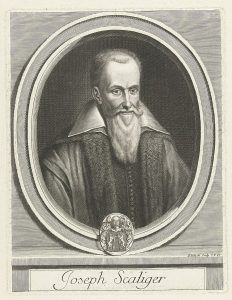
Joseph Scaliger
In history, one subjective truth is the ordering of historical events by means of chronology. The chronology currently observed in much of the world is the one established in the late 16th century by the Roman Catholic Church and the French scholar Joseph Scaliger. In 1582, the Council of Trent established a new calendar, adjusting the existing one to the solar year, in the process of which eleven days were simply scrapped (from October 4 to 15 in that same year). In 1918, Russia was the last European nation to adopt this so-called Gregorian calendar. In 1583, Scaliger presented an all-encompassing chronology by synthesizing the various chronologies that were known or used at the time, such as the Byzantine, the Roman Catholic (Western European), the Jewish and others. The pivot of the new chronology was the birth of Christ, then allegedly almost sixteen centuries ago, somewhere at the Eastern shore of the Mediterranean. Thus, there was a time before the birth of Christ (BC) and a time thereafter: AD, for anno domini, the year of the Lord. So as not to offend the supposed sensibilities of all those non-Christians in the world (most of whom I am afraid could hardly give a hoot), AD was later changed into CE (Common Era) and BC to BCE (before the Common Era).
Thus, to put it simply, the fact that most people on this planet consider themselves to be living in the year 2023 results from decisions made some four-and-a-half centuries ago. Even today, the authority of our rulers in this field is accepted unquestioningly. Just a few days ago and like it has been done now for years, by order of the European Commission, all watches, clocks and cell phones in the EU were set back one hour, so as to adjust to summer time. This simple fact illustrates the power that governments have over time. It is a useful fact to remember when trying to understand what mechanisms could have manipulated the clock and the calendar in past centuries for the sake of higher interests or whatever. If governments can make hours, days and weeks disappear, why would they not be able to make years, decades and even centuries disappear? One can only conclude that the ordering of time within any given social context ultimately depends on political decisions, not on some force beyond the reach of humans.
Since chronology depends on politics, it is hardly surprising that the introduction of Scaligerian chronology gave rise to criticism. No doubt Isaac Newton is the most illustrious of the earlier critics, presenting the first coherent comment on the new calendar and chronology, concluding that it was at least three hundred years too long. In 1814, Peter Müller, a notary public from the German Rhineland, published Meine Ansicht der Geschichte (“What I think about History”), concurring with Newton that the official timeline was too long. Müller wrote that history was replete with fake personalities and events. Actually, this was the inevitable consequence of the timeline having been overstretched.
Since then, there have been many more criticisms, some very fundamental and incisive, to the point that by now it has become imperative to profoundly reconsider the established and accepted chronology. Needless to say, this is not likely to happen anytime soon, since the historical establishment and those who profit from it, from university professors to grade school teachers and from professional to popular journals all the way to politicians, prefer to qualify all chronology critics as at best “pseudohistorians,” and at the worst as “conspiracy theorists.” No academic historian in his right mind, not wishing to destroy his reputation, lose his job, and ultimately not to be able to pay the rent for his apartment, will dare touch the subject.
The critics of chronology can be roughly divided into two groups:
- those who focus on pointing out the anomalies and inconsistencies within established chronology itself, also called “recentists,” most notably the Russian mathematician Anatoly Fomenko, the most thorough and outspoken chronology critic, an internationally renowned topologist and member of the Russian Academy of Sciences. Over the years, together with his collaborators, notably Gleb Nosovsky, Fomenko has pieced together lists of all known rulers in the world, dating from the earliest to the latest available records. He then proceeded to make graphs showing the years each ruler governed, the relationship with predecessors and successors and major events in each reign, such as wars and important battles. In doing so, Fomenko noted the surprising similarity of many such graphs, to the point that many seemed copies of each other. To give just one example out of many, the graphs of the rulers of the Holy Roman Empire from the 10th to the 13th centuries and the rulers of the Kingdom of Judah in the Bible are almost perfectly symmetrical. Again, there are so many of such similarities between lists of rulers from totally different periods and places that these cannot be explained by coincidence. That is just a statistical and mathematical impossibility. Hence, the conclusion is inevitable that at least one of such overlapping pairs of graphs must be fictitious. As a general conclusion, Fomenko suggests that the official chronology is about one thousand years too long. Fomenko has published a series of hefty volumes further elaborating his findings, with a decidedly nationalist and Russocentric focus. Fomenko’s suggested adaptation of chronology is called “NC,” an abbreviation of new chronology. Russian scientists Igor Davidenko and Yaroslav Kesler have also popularized elements of Fomenko’s research, such as in their book Myths of Civilization (2004).
- The so-called catastrophists. This group sustains that historical development is determined in the first place by cosmic and geological factors, such as the orbits of comets, the sun and other celestial bodies, volcanic eruptions and floods. Such events are so traumatic that the only way that human survivors can refer to these is by metaphors and mythology. The first to explore this theme in depth was the Russian scientist Nikolai Morozov (1854-1946), while the best-known in the West is the Russian-born psychiatrist Immanuel Velikovsky (1895-1979), who moved to the US, where he published Worlds in Collision (1950) and other books on the subject. Uwe Topper, a German polyglot researcher and writer, has published widely on chronology, and runs a very informative website in four languages (German, English, French and Spanish). Worthy of note is French marine biologist and geologist François de Sarre, who in his book Mais où est donc passé le Moyen-Âge? (Where have the Middle Ages gone?) argues that the Roman Empire was destroyed around 1350 by a giant asteroid, causing floods, a long-term temperature change of minus two to three degrees Celsius, leading to a little Ice Age, famine, epidemics, and widespread social and political breakdown. De Sarre went on to say that the Christian religion and the Roman Catholic Church originated about that time in Southern France (near Avignon, seat of the Papacy from 1309 to 1377), as indicated by many details about the life and death of Christ, which according to him could only have been taken from older Gallo-Roman and Celtic or Germanic traditions. The Renaissance follows just after the fall of the Roman Empire, reducing the Middle Ages to at most some two hundred years, but in all likelihood even less.
A third current can also be identified, but so far it is essentially represented by only one person, German economist and sociologist Gunnar Heinsohn, or perhaps two, if we include Heinsohn’s most eloquent and vociferous proponent, French medievalist Laurent Guyénot. Reverting the standard practice of archaeologists, who date their findings on the basis of the research and publications by historians, who in turn base themselves on Scaligerian chronology, Heinsohn decided to regard the archeological evidence as primary. In doing so, he concluded that the standard chronology was at least seven hundred years too long, and that the entire period between c. 230 AD and c. 930 AD is nonexistent. Essentially, all critics concur that established chronology is way too long. As a matter of fact, Heinsohn also did a lot of research on other subjects, such as biblical history and chronology, which makes him one of the key figures in the entire field of chronology criticism.
A special group of critics, focusing not so much on the chronology itself, but rather on the documents used to sustain it, are literary critics. On the basis of their literary and linguistic expertise, these specialists noted that quite a number of texts in all likelihood had not been written by their purported authors, but more recently by others. French Jesuit Jean Hardouin (1646-1729), for example, asserted that most literature of so-called classical antiquity was fake. The only authors he considered to have been producing work during the time of the “glory that was Greece” and the “splendor that was Rome” were Homer, Herodotus, Cicero, Pliny, Virgil and Horace.
English literary scholar Edwin Johnson (1842-1901), on the basis of his meticulous research, came to the conclusion that the history of England was seven hundred years shorter than generally assumed, and that the entire period from 700 AD to 1400 AD was fictitious insofar as it was rendered in standard historiography.
The most radical critic of all is the Swiss historian Dr. Christoph Pfister, influenced by Morozov, who argues that history (in Europe that is) begins only in the 17th century, which means that he thinks we are currently living somewhere in the 5th or even 4th century. Pfister is among those who take into consideration certain phenomena that are generally overlooked by traditional historians. One of these is the average time between a breakthrough invention (like the steam engine or powered aviation) and its full development, usually about fifty years. On the other end of the spectrum stands a German historian, Dr. Heribert Illig, according to whom just almost three centuries of history do not exist and have been invented. This would be the entire period between 610 AD and 910 AD, which he therefore calls “phantom time.”
The work of the most prominent chronology critics finds lateral support in the growing body of more detailed research into the history of specific subjects, places and areas, such as the history of the Bible, the history of the Celts, the history of the Jewish people, the history of art and architecture, the history of Islam in Spain, the convincing evidence that ruins of the city of Petra in Jordan are actually those of the original city of Mecca, the history of the Romanians in the Balkans, the history of languages, and many more. These subjects fall into the category of history as originally defined, that is, the rendering of the past on the basis of written and printed sources.
By widening the perspective to include prehistorical periods, the questions and doubts besieging the fortress of Scaligerian chronology increase exponentially. The mysteries concerning the tangible vestiges of long disappeared civilizations and human societies, such as megaliths, tunnels and petrified “cart ruts,” are still waiting for a satisfactory explanation and their rightful place in a coherent historical account that is yet to be written. The same goes for astronomical events and phenomena, such as the “Electric Universe.”
Chronology criticism is, of course highly controversial, and invariably is greeted with either dismissal, irritation, impatience, incredulity, ridicule, anger or all of the above. If the explanations suggested by chronology critics are as well-founded as they seem to be, if not in their totality, then at least in part, all of history is in urgent need of a thorough revision.
The basic assumptions and tenets of Western civilization, European history and much of world history ought to be reconsidered. As long as academic historians continue to lack the intellectual and moral courage to set themselves to this task, thus forsaking their duties, they are the least entitled to criticize others who are doing what they themselves should be doing.


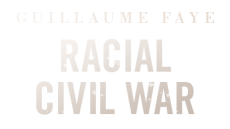
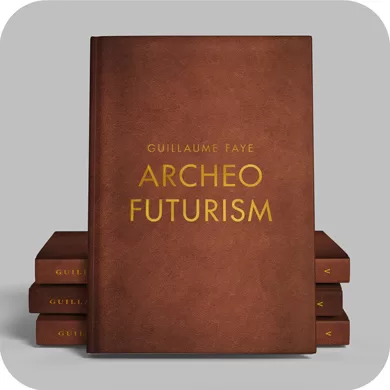



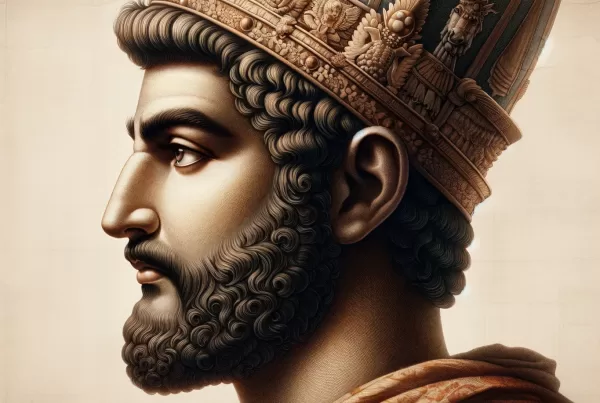
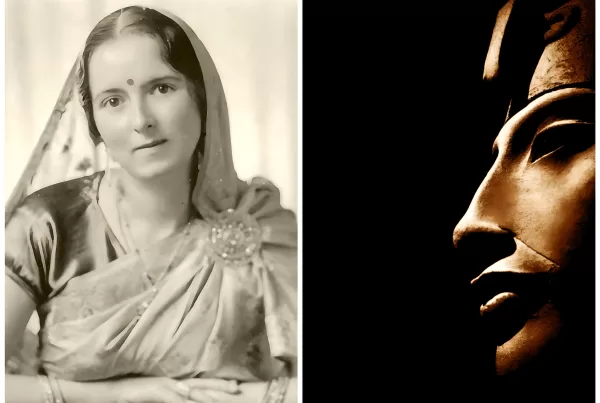

Time to revisit Oswald Spengler,whose historical perspective has never been equaled.
Indeed, all relevant sources and authorities need to be taken into account for a new synthesis.
Which calendar did the ancient Greeks use? If only Herodotus then what of Thucydides and Xenophon in your opinion? Were Spengler and Toynbee aware of these discrepancies?
The Ancient Greeks, for want of a better term, are considered to have used a calendar based on the year and lunar months, and collectively they are said to have dated on the basis of the Olympic Games, where representatives of all Greek states used to meet once every four years. Spengler and Toynbee presented histories of civilisation, or rather succeeding civilisations, which will still be valuable for their insights and analysis independent of any adjustments to dating practices, whether or not they will ever take place.
In all likelihood, I believe the place of the Ancient Greeks in a corrected chronology might move up more than one thousand years, to somewhere early in the “Second Millennium” in what we now call the Middle Ages. Same with the Romans. This might seem preposterous, but it would, for instance, also correct the outrageous supposition that the Athenian Parthenon is a structure that is 2,500 years old.
I’ve come across art historians that question the existence of Charlemagne, although he was supposed to have fought battles with Mohammed, which would surely put his existence into question. Also there are theories that place an earlier (?) date for the Sphinx, as it shows signs of water erosion and that part of Egypt would have had to be verdant if not tropical.
There actually at least three Charlemagnes: 1) the one of official history and the Charlemagne Prize, 2) Charlemagne as a local ruler in the Marches region of Italy (sustained by Italian historian Giovanni Carnevale), and 3) Charlemagne as an invented figure, as suggested by German historian Heribert Illig, who argues that the entire period between 614 AD and 911 AD is invented. There is also a fourth one: Charlemagne as a ruler of a Roman province in what is now Germany (suggested by Heinsohn).
As for the Sphinx, there are indeed people who say it should be dated prior to 10,000 BC. But that is part of a debate I have not (yet) researched properly. But it is sort of accepted knowledge that some 40,000 years ago the Sahara was a fertile plain.